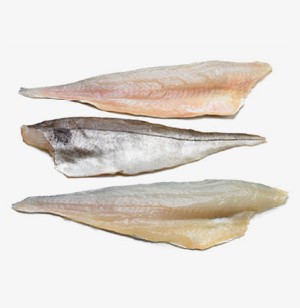Smoked fish
Originally devised as a method of preserving fish, smoking also adds a different dimension to the taste and texture. There are two basic methods of smoking fish: Cold smoking - The most commonly used technique; smoke gently infuses the fish without cooking it. Hot smoking - Uses smoke hot enough to cook the fish. The most popular, and probably best species for smoking is Salmon. One of the advantages farmed Salmon has over wild is its higher and more consistent oil content, which makes it ideal for smoking. Whole skin-on salmon fillets are cured with salt and sugar for 14 hours, then washed and rested for 24 hours before being smoked for 9-10 hours over a cold smoke from a hard wood (usually oak and beech). They are then allowed to cool before being prepared to the required specification. However, the most important part of this process is not the smoking, but the curing. This is where the smoker has to ensure there is exactly the right amount of salt in the finished product - and they all have their secret recipes! Smoked Salmon is clearly something every chef has a strong opinion on. As well as Salmon, other oily fish are well suited to the process such as Trout, Mackerel and Herrings (Kippers). Halibut, Tuna, Marlin, Sturgeon, Scallops, Mussels, Oysters and Prawns also work well. Recently we’ve even smoked sea bass – delicious. Although not oily, Haddock takes the smoking process especially well, and cold smoked fillets provide the basis of any great kedgeree or fish pie. The bright yellow colour often associated with Smoked Haddock is a dye, historically used to compensate for a reduced smoking time, which lowered the cost. While dye is still used, most demand is for natural Smoked Haddock, which has a subtle, beige colour and much better flavour. Finnan Haddock originated in the Scottish village of Findon, where whole fish were headed, gutted and split open leaving the backbone and tail intact, then soaked in brine before cold smoking over peat. Arbroath Smokies are small whole haddock, gutted and headed, which are dry salted and hot smoked. Cod is also smoked, but is not as popular as the sweeter flavoured Haddock.





